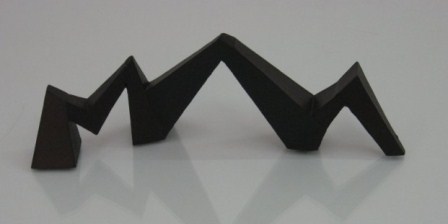The Reina Sofia Museum (Madrid) hosts from Wednesday, November 12th , the exhibition 'El retorno de la serpiente' ("The return of the snake'), an approach to the work of sculptor Mathias Goeritz (Danzig, 1915-Mexico City, 1990) made from his arrival in Mexico in 1949.
The exhibition will include a selection of over two hundred works. His nature -drawings, sketches, models, photographs, sculptures and paintings on table- shows the experimental, analytical and even playful of Goertiz production, which is structured by the persistence of a theme and motif.
Over four decades, in both his theoretical and practical production the rational utopia converges with neoprimitivism factors derived from his own biography: the tour for different cities in Europe and North Africa (1948), his stay in Spain and participation in the eve of the First Week of Art in Santillana del Mar (September 1949), as well as contact with the Mexican culture.
Axis and basis
The exhibit takes the principle of "emotional architecture" as the subject on which it is built and articulates the exhibition. Formulated by Goertiz in 1954, this principle becomes the dynamic axis and aesthetic and theoretical basis of his work. With him the need to design spaces appealed, works and objects that cause modern man to a maximum emotion versus functionalism, aestheticism and individual authorship. In this sense, notions of collaboration, freedom of creation and recovery of the social functions of design are recognized in all works encouraged and performed by Goertiz in those years.
Presented as a tour of the most important works of Goertiz, the exhibition will reveal how the body of work and activity arises from the assumption of art as a beyond art project (extending the scope to the social, political and public) where a primitive form -the ridge lines that make up the body of a serpent (La serpiente de El Eco, 1953)- becomes formal and conceptual module of all his work, developed in a cold War context. In turn, terms like model and monument appear as categories where his work transits, showing a willingness to subvert the notion of proportion.
Source: hoyesarte.com











